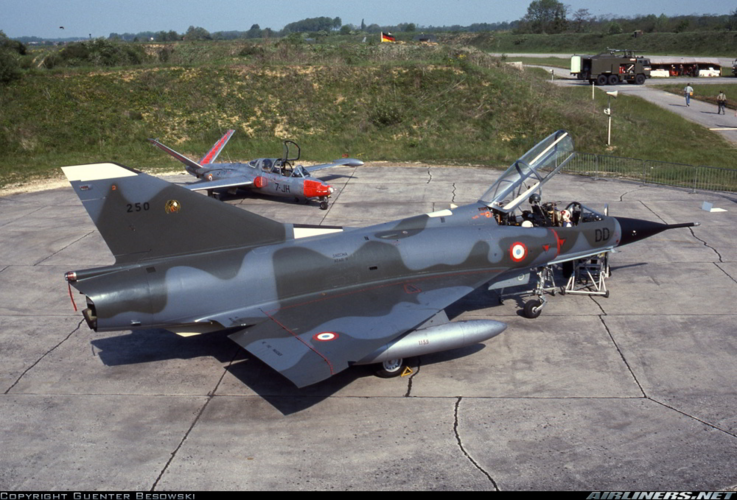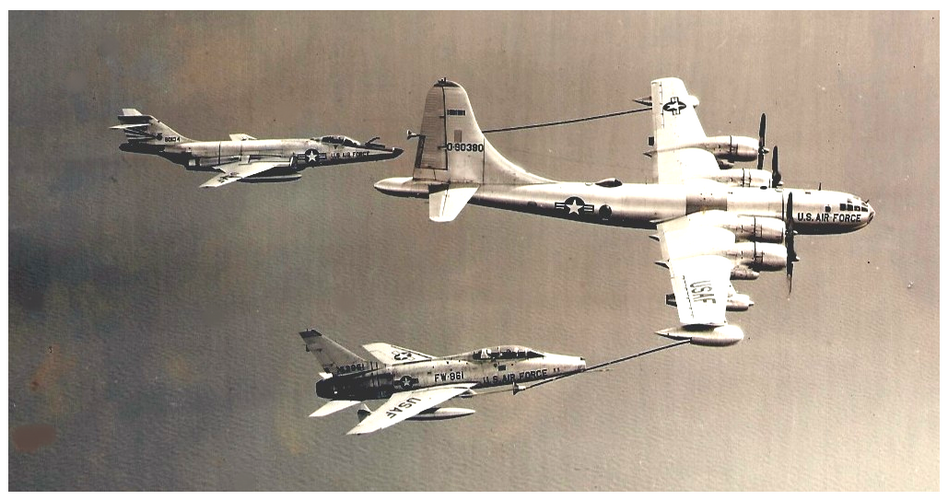Kat Tsun
eeeeeeeeeeeeeee
- Joined
- 16 June 2013
- Messages
- 1,361
- Reaction score
- 1,763
This is as true for Sea Dart as anything else, but Sea Dart is rather substantially poor at certain classes of air targets that are predominantly considered "low altitude fighters and cruise missiles".
Sea Dart was not a particularly good missile unless the target never maneuvered, this is especially true given ramjet missiles (such as the Odin) suffered from major lateral acceleration problems. I'm not entirely sure if the Argies could have taken advantage of this, because it didn't seem to help them as they don't appear to have done much evasive maneuvers against Sea Dart, but that's probably because they had poor training.
As they found out the Sea Dart was quite effective at engaging low altitude targets. Had they been moving perpendicular to the incoming missiles it's likely they would have been able to evade but that would require abilities beyond them. Sea Dart's rather notorious poor performance against crossing targets wasn't widespread knowledge in 1982.
Sea Dart only hit the rocket because it was more or less zeroed in on Exeter and locked onto Andromeda. Had another missile come barreling down perpendicular to that one, or high off axis, it's highly probable the Sea Darts would have missed because they had bad performance against crossing targets at medium (10-15 km) range.
This is exactly the issue the British faced with Sea Dart Mark 2 and why it was ultimately replaced with Aster 15, after all!
But as I said that was relatively unknown at the time, perhaps even to the British, so the Argies definitely wouldn't have the sense to do such a thing as they wouldn't be aware of Sea Dart's weakness, but it would be the optimal method of attack to hit from two or more directions vectored on Invincible.
By flying perpendicular to incoming SAMs they could easily present a crossing target that is far too difficult for the rather crummy lateral acceleration of the Mark 1 Sea Dart to hit.
Your knowledge of Sea Dart is pure fiction, way off the mark or poorly researched irrelevant projections from other systems;- .
Fiction - Sea Dart had poor low level performance, against manoeuvring and against crossing targets, Argentine pilots didn’t manoeuvre
Fact 1 - The Sea Dart kill of Skyhawk C301 on 30 May, destroyed at 9-10 miles, at 100ft altitude while in a hard turn. ref Falkland The Air war
Fact 2 - Sea Dart engagement attempt on Exocet which was crossing HMS Exeter bow at 5 miles at 30-50ft, again on 30 May, Successfully track achieved, missile launch and it guided. Results not observed either visually or by radar as the Exocet dropped below the radar horizon a few seconds prior to engagement completion. Ref HMS Exeter Operations Log. The Sea Dart is not credited with the kill although the Exocet didn’t complete its expected flight range.
Fact 3 - Sea Darts specification NSR 6502 Issue 4 required no degradation in missile performance for targets crossing at up to 70 deg, including receding targets.
i- The Sea Wolf had a crossing target problem because only one of its engagement mode would allow it, ie CLOS using the TV camera on the launcher.
ii- Argentine A4’s mostly lacked RHWR’s (All Navy, and a high percentage of AF)
Fiction - Sea Darts Odin suffered from major lateral acceleration problems.
Fact - Sea Darts intake is axis symmetrical so fundamentally could not have a problem only in the lateral (or horizontal) plane. The Odin was the flame tube which was supplied with air via a meter and a bit long tube so it always processed very straight flowing air. Ref - simple examination The Thor on the Bloodhound initially suffered from flow disruption shed from the forebody (fuselage) while pitching ;- terminal accuracy was significantly improved by late interception phase control de-restriction. The axis symmetrical intake was selected in the next generation because it inherently avoided this problem.
Fiction - relatively unknown at the time, perhaps even to the British, so the Argies definitely wouldn't have the sense …..they wouldn't be aware of Sea Dart's weakness
Fact - The Argentine Navy operated Sea Dart, used the same tactical engagement doctrine and had jointly trained with the Royal Navy.
Fiction - Sea Dart 2 was cancelled due to poor target crossing performance
Fact - Limited U.K. funding in 1978 meant there was a simple choice;- 34 additional Sea Harriers or Sea Dart 2;- The choice was extra Sea Harriers so the Sea Dart mk2 was cancelled. Subsequently the Sea Dart mk 1 was upgraded with a bunch of mods including mid course guidance, frag warheads and IR prox fuses (some of which came from the mk2 study)… BTW I worked on Sea Dart Mod1 upgrade between 84-86 and while I remember quite a few issues, poor crossing target performance wasn’t amongst them. And then in1991 a Sea Dart destroyed a Silkworm that was a crossing target.
Concerning the claim in another post about the superior turning performance of the Mirage/Dagger. Ah no, pure delta’s have terrible turning because of the tiny pitching moment which can be generated by the elevons;- they’re just too close to the cp.This is particularly true of the Dagger which had no LE slats, which tends to move the cp forward thus increasing the moment arm. Pure delta’s were intended as interceptor as they were unsuited to ACM. This is the reason there’s no more pure delta’s;- they all have canards to provide pitching moments and hence turning performance.
If you wish to dispute the above, please provide reference documents for all your Sea Dart claims.
OK, I'm not going to dispute what amounts to a speculative tangent on my part.
My impression of Sea Dart's performance against missiles mostly comes from the fact that it was fired on multiple missiles during the Falklands and never shot down an Exocet, rather the Exocets tended to fail on their own accord (possibly the missile running out of fuel?) or were duped by chaff. Conversely they were quite good against Silkworms coming in on a straight line towards Glamorgan during GW1. Obviously whatever causative issue could very well be related to Exocet or some other circumstantial failures, rather than the missile itself, as Sea Dart had relatively little trouble hitting Skyhawks and the like. However, the Skyhawks typically came in abeam the ships rather than parallel with them as a high-flying CAP might. I don't know what sort of radar the T42s used nor its technical characteristics, but I do know that aircraft can and do fly in certain courses relative to an emitter to appear to be moving below its velocity gate and subsequently be ignored by it. While this would do little for a bomber trying to hit the ship, it would be useful for a CAP fighter trying to avoid being hit by it.
Anyway, thank you for providing this information.
Perhaps then the performance on the British side came back to the operators, or the lack of AEW, or lack of CEC on the warships and aircraft, or what-have-you. Whatever the case it's not a big deal since the circumstances of what the missile or its associated air defense system are being used could change to fit the problem better aren't in question. The technical details aren't hugely related to the facts that a missile and multiple attack aircraft got close enough to be engaged by deck gun fire from an escort.
The question is more "what if there were more missiles coming from more directions", as it's somewhat obvious that if a single missile and three fighters, hardly an overwhelming quantity in an informational or targeting channel sense, penetrated rather deep into the main air defense zone of the battlegroup and got pretty close to some ships, then multiple missiles (two or three perhaps, as opposed to one) from the same or an additional axis would probably hit a ship.
Whether that points to performance of Sea Dart, the associated naval combat system, a lack of AEW, or whatever, is not too important, as much that the weakness itself existed and could have been exploited if Argentina had only a few (perhaps three or five or so) more missiles.
I don't think there's anything terribly controversial or disputable in the more distilled argument I'm making, even if my understanding of the technical and engineering specifics aren't exactly stellar the basics of the matter are easy enough to grasp, which are:
1) Putting interceptors in Stanley and using GCI to fight the British is dumb. They would be bombed to death by strike aircraft probably. Even if they got airborne they would be more meat to a grinder against an air force that is demonstrably better at shooting down other aircraft.
2) Replacing the Super Es with some other aircraft is bad for Argentina because it was under a major arms embargo for years at the time. Unless they had Soviet (at which point we're discussing pure fantasy I guess) support it's unlikely they would be able to maintain a fleet of anything other than French aircraft. The USA didn't want to sell them anything and the UK probably wouldn't either.
3) More missiles is vastly more dangerous than anything else, because the British performance against Exocet and iron bomb threat was rather bad given how many escorts were damaged or lost by bombs or missile strikes, and this is a weakness that would not be cured for a long time, at least until after the war had ended, if not later with the deployment of things like Sea King AEW, a second CVS, or whatever.
Given that the primary "alternate history" discussion boils down to "what if Argentina forward based planes from Stanley with improved airports for jet aviation" I think they're all reasonably applicable.
This would all have a much, much lesser effect than the addition of a few more missiles. Exocet was by far and away so high performing during the war that nothing else approaches it in risk to the task force. Aerial refueling, full airborne C2, and expanded fighter operations from Stanley, all of which are beyond the reach of the junta to begin with, would be completely dwarfed by the addition of literally two or three more Exocets arriving from France before they stopped delivering.
Perhaps the Argentinians might have been somewhat more profligate and expended their missiles on more ships, or perhaps they might have put them on trucks and kept there, or possibly could have massed additional rockets from different directions on Invincible's task group on May 30. The last one would be the greatest possible danger, the smallest possible change, and the only thing that seems "reasonable" to discuss much given the context I suppose.
Last edited:


